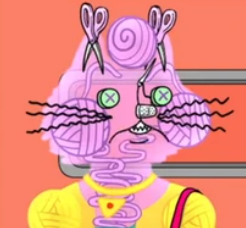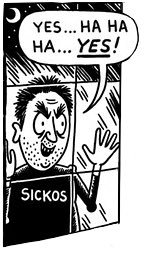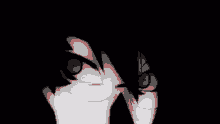Los Jaivas is a Chilean rock band, notable for the combination of psychedelic rock and progressive rock with Latin American folk instruments and rhythms, especially Andean ones. The group was formed in Viña del Mar (Valparaíso Region, Chile) in 1963 And is currently active. They have often been considered "one of the most important and influential bands in Chile and South America."
In the 1960s, Gabriel, Eduardo and Claudio Parra, Eduardo Alquinta and Mario Mutis made their appearance on the national music scene. Under the name High Bass and with an initially popular repertoire, which soon evolved into progressive rock along with the incorporation of Latin American instruments and rhythms, they performed at different venues and parties in Viña del Mar. This is how they Spanishized their name to Los Jaivas, the name with which they first appeared in May 1970, in the La Reforma room of the Faculty of Arts of the University of Chile. As a progressive group, they were one of the Chilean rock groups with the most original proposals, along with Los Blops and Congregación.
In 1971 they recorded their first full-length album, El Volantín, marked by a psychedelic sound and abundant improvisations, however the massive consecration took place the following year with the recording of the single that included the songs "Ayer cache" and "All together. ". The latter would become the first rock song with a national identity to occupy the first place in the popularity rankings on the radio, and was released the following year on an LP known vulgarly as "La Ventana", although its real name was simply Las Jaivas
Due to the coup d'état and the establishment of the dictatorship of General Augusto Pinochet, Los Jaivas left abroad, initially settling in Argentina. In that country, with the participation of Julio Anderson, first, and Pájaro Canzani, later, instead of Mario Mutis, they produced three albums: one known as El Indio (1976), another with the cooperation of the Brazilian musician Manduka, called Los Sueños de América (only published in 1979), and a third entitled La canciones de Sur (1977). All this production was translated into a true revitalization for the national rock scene, which was experiencing a moment of null musical production and where only groups such as Los Trapos or Congreso sounded. At the same time, they made a real contribution to the development and evolution of Argentine rock.
In 1977 after suffering the rigors of the military regime of the trans-Andean country, the group left for Europe, touring the entire continent and leading a life in community, a fact that distinguished them as exponents of Chilean hippism. Installed in France, they conceived, composed and recorded Alturas de Macchu Picchu, one of the greatest works of rock and Chilean popular music.
Back in Chile, after the editions of the albums Aconcagua (1982) and Obras de Violeta Parra (1984), among others, the group suffered a notable loss. In 1988 Gabriel Parra died in a car accident in Peru. The event determined a profound restructuring of the group in all aspects, until it was finally put together with the presence of his daughter, Juanita, on the drums. Thus they recorded the tribute album Si tú no eres, whose sound made a difference with respect to previous works..
Los Jaivas' production continued with works such as Hijos de la Tierra, Mamalluca (symphonic) and Arrebol; but five years later the tragedy was repeated with the death of Eduardo Alquinta. Few times in the history of Chile the funeral of a musician brought together so many people, as it was that year 2003. This speaks of the ancestry that this group has in the Chilean popular soul, and the importance it has had in the history of the music this country.
The musical production of Los Jaivas transformed them into part of the national identity and the affection of the public has remained intact over time.
-- Alturas de Machu Picchu en vivo, 1981 :wiphala:
-- Manduka & Los Jaivas - Los Sueños de América
Here is a list of Trans rights organizations you can support :cat-trans:
Buy coffee and learn more about the Zapatistas in Chiapas here :EZLN:
Resources for Palestine :palestine-heart:
Here are some resourses on Prison Abolition :brick-police:
Foundations of Leninism :USSR:
:lenin-shining: :unity: :kropotkin-shining:
Anarchism and Other Essays :ancom:
Remember, sort by new you :LIB:
Yesterday’s megathread :sad-boi:
Follow the Hexbear twitter account :comrade-birdie:
THEORY; it’s good for what ails you (all kinds of tendencies inside!) :RIchard-D-Wolff:
COMMUNITY CALENDAR - AN EXPERIMENT IN PROMOTING USER ORGANIZING EFFORTS :af:
Come listen to music with your fellow Hexbears in Cy.tube :og-hex-bear:
Join the fresh and beautiful batch of new comms:
!genzedong@hexbear.net :xi-gun:
!emoji@hexbear.net :meow-tankie: :meow-anarchist:
!libre@hexbear.net :libretion:
!shrekland@hexbear.net :shrek-progress:
Vote and nominate Movies for the next month’s Movie Fridays here the voting ends on the 27th.
So two winners @context and @FunkyStuff I :rat-salute: you both.
Previous answer
The first deal described produces this sequence on the table, with the 4 on top: 1,3,5,7,9,2,6,10,8,4. Since the 4 is tenth, put the 10 fourth from the top as you form a new pile of cards. The 8 is in ninth, so put the 9 eighth, and so on. The new pile, from top down, will now be in the desired order: 1,6,2,10,3,7,4,9,5,8.
A weighing puzzle
A balance has only two weights, 1 ounce and 4 ounces. In three weighings , split 180 ounces of grits into two packages of 40 and 140 ounces.
Remember to have fun and dm @Wmill the answer
Keeping up with the vibe :meow-fiesta:
I just returned a little girl's lost kitten. :sicko-wholesome:
My parents have accepted my great strategy of releasing a chicken :chicken-bop: in the bathroom everytime we see a cockroach :dancing-roach:, they sprint the moment they see the roach to catch it, very effective
on the morning one ate 2 roaches and on the night another ate 3
:meow-bounce: Eating spaghetti and riding my bike
:meow-bounce: Trying not to hurl while I'm stopped at the light
:meow-bounce: Back at my house, and I feel like I'm dead
:meow-bounce: Time for more spaghetti before I go to bed
Drove over 800km/500 miles halfway across the country, only almost died like 5 times. Fuck cars suck so much everyone
:train-shining:
A ton of people just replying or quote tweeting the DSA Venezuela delegation with "Twitter for iPhone".
I finally got my new glasses, time to lose in FTL in HD :picard-direct-action:
Had a therapy appointment today after a fight I had with my dad 2 weeks ago and it was ❤️🩹









